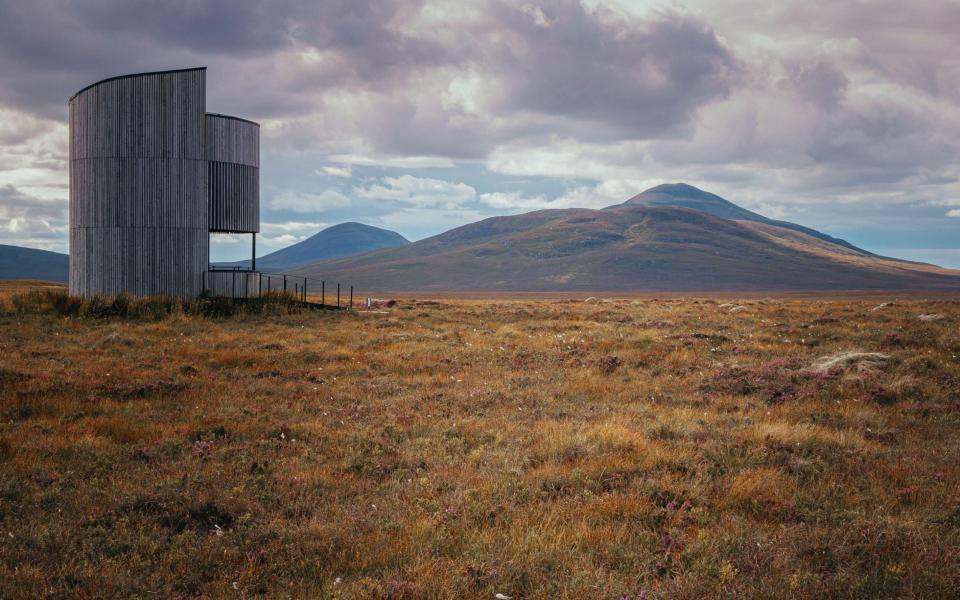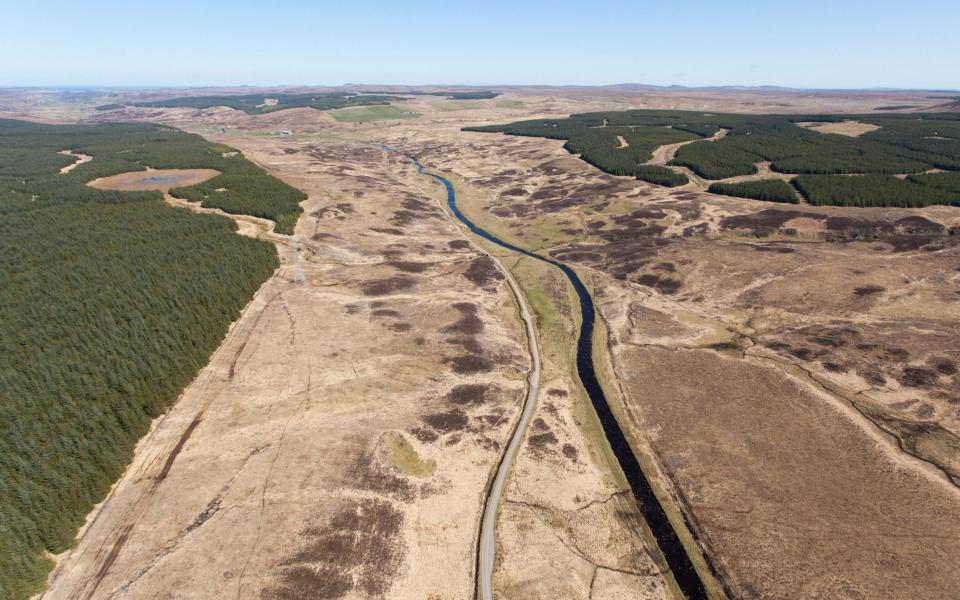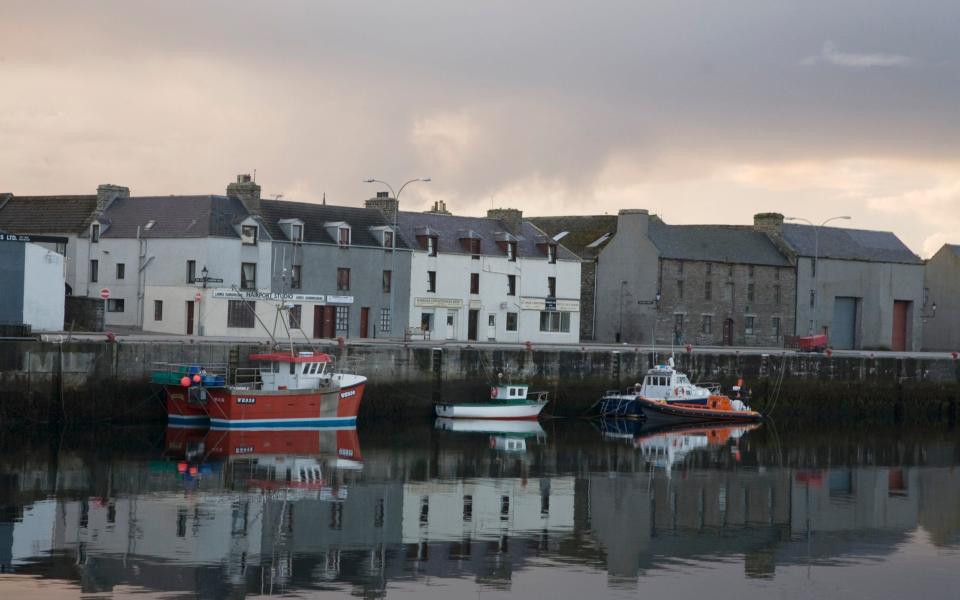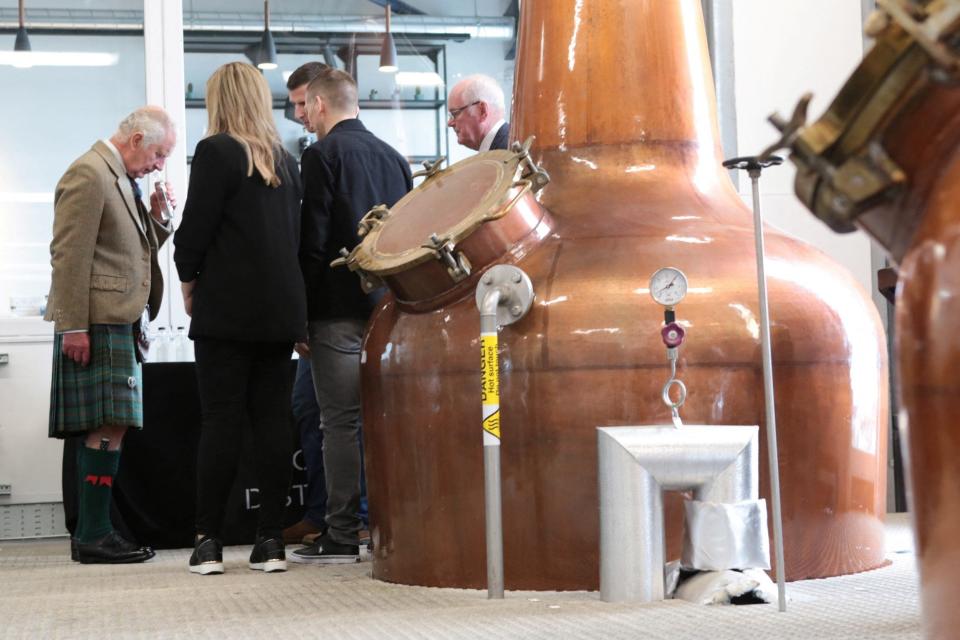I was very excited about my journey to Wick and Thurso. I had only been to the north-east corner of Scotland once before; A journey from Land’s End followed by a visit by plane to John O’Groats. I remember very little of the place, other than signing a book to record my visit and feeling like it was a bit pathetic to drive there when so many people were cycling or even walking like Ian Botham.
This time I was catching the train. Since I live in Lancashire, the Caledonian Sleeper is not as affordable as it is for Londoners. It stops in Preston at 12.30 on the way up and at 4.30 on the return leg. I managed to sleep for a few hours and woke up eating coffee and porridge somewhere north of Perth.
The snow was all the way to the edge of the track. I saw a deer on a hill. I saw the great slab of the central plateau of the Cairngorms. I saw the word “dalwhinnie” and could almost taste the little drama. But let me quickly pass Inverness, a beautiful, rather pretentious town on the tourist route, and take us onto the Far North Line.


This 161-mile railroad passes through Flow Country, the largest swamp area in the world. When you look at a map, you will be surprised by the broad curves of the line.
Although it is not easy to cross the wetland, it is easier than crossing the coastal inlets and drop-offs. The train runs on an embankment and you can see bright pools, streams and spongy peatlands of sphagnum moss, ling heather, asphodel and butterbur.
The depth of the peat, which has been formed for more than 10,000 years, reaches up to ten meters. In the 1970s and 80s, Government tax incentives encouraged forestry, and swamp areas that had remained treeless since time immemorial were drained, carved with deep furrows, and planted with fast-growing conifers.


Flow Country has become a battleground between pro-plantation developers and conservationists concerned about the destruction of such a rare and pristine habitat.
The area is now allowed to recover, which is good for the planet (peat is an excellent carbon store) and the native fauna. Merlins, short-eared owls and golden eagles hunt over mosses and pools.
Divers, plovers and greenshanks feed and nest in wetlands. Microhabitats support insects, spiders, amphibians, reptiles and small mammals such as mice. In February 2023, a proposal was submitted to Unesco to recognize this magical region as a World Heritage Site.
The tough grass looked golden in the descending sunlight. It reminded me of the Patagonian steppes. When I first traveled to southern South America in the 1990s, I would seek out landscapes similar to those of my home in Lancashire. Now I find myself noticing little Patagonias in my hometown. The northern tip of the world is as seductive as Argentina and Chile end of the world.
Wick is a solid, stone-built town with a special atmosphere. Its name comes from Vik, indicative of a distant Scandinavian past, but it came to prominence as a fishing port in the 19th century. It’s split in two.
On the left bank of the river is a town center that has seen better days. For every shop currently open, there are three empty shops. I checked into Mackays Hotel on the other side of the river for two nights. Located on Ebenezer Place, the shortest street in the world, it’s a casual spot serving great steaks and whiskey. When night came or it rained, this was my shelter.
Behind the hotel stood Pulteneytown, the oldest planned industrial settlement. Thomas Telford built the port in 1803-11, adding a tidy network of houses for workers and managers. In the middle of the upper part of the houses is the Old Pulteney distillery; I visited mash tunes, pot stills and dark warehouses, then tasted. It’s strange, but not unpleasant, to find yourself drinking single malt in the afternoon.


Nearby was the town’s other big attraction: the Wick Heritage Centre, which tells the story of its rise to prominence as Europe’s greatest herring fishing port through an eclectic mix of artefacts: a smokehouse, militia old and new (Wick was subjected to the first daylight bombardment on the mainland ) Britain in the Second World War), a fishing boat and the magnificent Johnston Photography Collection.
Close-ups of fishermen were moving and panoramic views of the harbor filled with barrels of salty “silver valentines” were spectacular. Thousands of men came here to earn money and spent their free time in local bars. The town was notorious for excessive drinking, fights and prostitution. Temperance campaigners have joined forces with local wives fed up with being handed empty pay packets. Eventually, the ban was imposed under US rules. It lasted from 1922 to 1947.
I told Donald Henderson, president of the Wick Society, which runs the heritage centre, that the view reminded me of Patagonia. He nodded and said, almost as an aside, that many people from Caithness had migrated to Patagonia to work on sheep farms. A book called the next day Caithness to Patagonia Dropped off at reception in Mackay by Ian Leith. Life imitates dreams.
A mid-morning walk took me along the coast, past the harbor and an old quarry occupied by fulmars. There were lobster nets and a few boats, but today wind energy is booming; turbines and cabling equipment filled the harbor edges. I passed Trinkie, a spectacular pool of natural seawater on a shelf of bare rocks, and came to a castle known as the Old Man. It was an atmospheric spot where birds soared over cold thermals, mist and hum isolated me and the lichen-covered ruin from the rest of the world.


I went to Thurso by bus. There was also the dawn train option but I didn’t want to rush my Full Scottish. I only knew two things about my destination. First, it was the northernmost town on the British mainland. Secondly, it grew and prospered thanks to the Dounreay nuclear testing and testing site, which came into operation – or, as the jargon puts it, “became critical” – in the late 1950s.
It was a more airy, slightly livelier town than Wick and had a beautiful beach. Apparently a popular “cold surfing” hangout. Again I found a welcoming hotel, Pentland, and a wonderful little museum. I learned a third nice thing: there is a reference in the etymology of Thurso to Thor, the god of storms, sacred groves, and trees.
You can’t get here without checking out Dunnet Head, Britain’s northernmost point. I then spent some time with Martin Murray, who runs a nearby gin distillery. It is rebuilding a former grain mill in Castletown to make whiskey, using the famous Caithness flagstone as used at Ground Zero in New York and preserving many of its original features.
Wolfburn and North Point Distilleries, which opened near Thurso in 2013 and 2020, and the even newer 8 Door Distillery in John O’Groats are already turning the highest corner of the Highlands into a whiskey hotspot.


I tried a drop of 8 Doors’ peated whiskey on site. Then I met American expat Jay Wilson, who created the John O’Groats Trail nearly a decade ago. We took a short walk up to Duncansby Head, the northernmost point along the coast.
It was a very fitting end to my mini adventure. Jay showed me some of the geography (deep valleys where the sea rushes in) and guided me to a part of the carpet swamp. It rolls and slides just like a soft carpet. Flow Country is a perfect name. I looked back on the headland below the lighthouse and saw Noss Head lighthouse, near Wick, beyond a wall of impressive cliffs.
But which way should I look? down or up? Thurso was far north; It was as far from King’s Cross as Budapest is from Paris. But my gaze was drawn to Stroma and the Orkneys. Why do travelers miss going to the end of the queues?
I don’t have an answer, but I think this urge is strongest in wide open landscapes. Perhaps Thor came ashore and stomped his massive feet, destroying Caithness and Sutherland, just to make us want more.
Supported Chris Moss’s trip to Caithness Visit Scotland And Caledonia Sleeping. Mackays Hotel offers bed and breakfast options from £115. At the Pentland Hotel, a B&B doubles from £88. The standard tour at Old Pulteney costs £15 per person. See their website Flow Country, Caithness and Sutherland tourism and official distilleries map For more information.